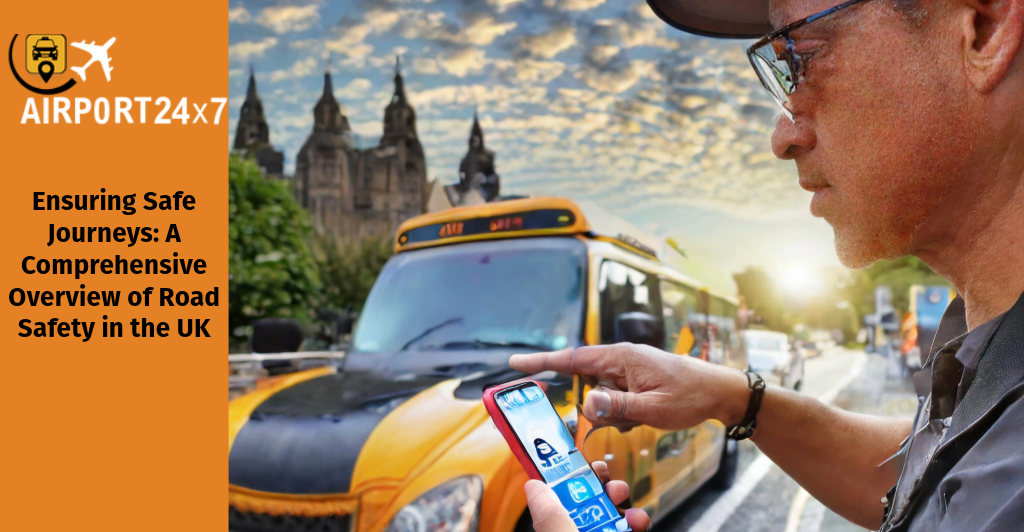
Introduction
Road safety is a paramount concern in the United Kingdom, where millions of people rely on the extensive road network for their daily commutes, business travels, and leisure activities. Despite significant advancements in technology and infrastructure, road accidents remain a pressing issue. However, concerted efforts by various stakeholders, including government bodies, law enforcement agencies, road engineers, and community organizations, have contributed to a gradual improvement in road safety standards across the UK.
This article aims to provide a detailed examination of road safety in the UK, exploring the challenges, initiatives, and strategies implemented to mitigate risks and enhance safety for all road users.
The Current Landscape: The UK boasts a comprehensive road network spanning thousands of miles, accommodating a diverse range of vehicles, including cars, buses, trucks, bicycles, and pedestrians. However, this diversity also presents challenges in ensuring the safety of all users, especially considering varying speeds, sizes, and vulnerabilities.
Statistics from the Department for Transport (DfT) reveal both progress and persistent challenges in road safety. While the overall trend shows a decline in road fatalities and injuries over the years, certain demographic groups, such as young drivers and vulnerable road users, remain disproportionately affected.
Key Challenges
- Distracted Driving: With the proliferation of smartphones and in-car entertainment systems, distracted driving has become a major concern. Activities such as texting, browsing social media, or adjusting navigation systems divert drivers’ attention from the road, increasing the risk of accidents.
- Speeding: Excessive speed is a significant contributor to road accidents, reducing drivers’ ability to react to hazards and increasing the severity of collisions. Despite stringent speed limits and enforcement measures, speeding remains prevalent on UK roads.
- Vulnerable Road Users: Pedestrians, cyclists, and motorcyclists are particularly vulnerable to road accidents due to their limited protection in case of collisions. Improving infrastructure, enhancing visibility, and raising awareness among all road users are essential in safeguarding vulnerable groups.
- Drink and Drug Driving: Despite strict laws and public awareness campaigns, drink and drug driving continue to pose serious risks on UK roads. Intoxicated drivers impair their judgment, coordination, and reaction times, endangering themselves and others.
- Road Infrastructure: The condition of roads, signage, and lighting significantly influences road safety. Poorly maintained infrastructure, inadequate signage, and insufficient street lighting can obscure hazards and increase the likelihood of accidents.
Initiatives and Strategies
Addressing these challenges requires a multifaceted approach involving legislative measures, technological innovations, public awareness campaigns, and collaboration between various stakeholders. Some of the key initiatives and strategies aimed at improving road safety in the UK include:
- Legislative Measures: The UK government regularly reviews and updates road traffic legislation to enhance safety standards. This includes imposing stricter penalties for traffic offenses, introducing new regulations on vehicle safety features, and implementing measures to combat drink and drug driving.
- Education and Awareness: Public education campaigns play a crucial role in promoting safer road behaviors and raising awareness about the consequences of reckless driving. Initiatives targeting schools, workplaces, and community groups aim to instill responsible attitudes towards road safety from an early age.
- Enforcement: Effective enforcement of traffic laws is essential in deterring risky behaviors and ensuring compliance with regulations. Police patrols, speed cameras, and roadside checks help identify and penalize offenders, thereby reducing the incidence of road accidents.
- Infrastructure Improvements: Investing in road infrastructure upgrades, such as the installation of traffic calming measures, pedestrian crossings, and cycle lanes, enhances safety for all road users. Moreover, incorporating smart technology, such as intelligent traffic management systems and vehicle-to-infrastructure communication, can further improve safety and efficiency.
- Collaboration and Partnership: Road safety is a collective responsibility that requires collaboration between government agencies, local authorities, law enforcement, transport operators, and community organizations. Partnerships facilitate information sharing, resource allocation, and coordinated efforts to address specific safety challenges.
Conclusion
While significant progress has been made in improving road safety in the UK, there is no room for complacency. Continued efforts are needed to address emerging challenges, leverage technological advancements, and foster a culture of responsible road behavior. By adopting a holistic approach that combines legislative measures, education, enforcement, and infrastructure enhancements, the UK can strive towards its vision of safer roads for all. Every road user has a role to play in ensuring their safety and the safety of others, ultimately contributing to a more secure and sustainable transportation system.
